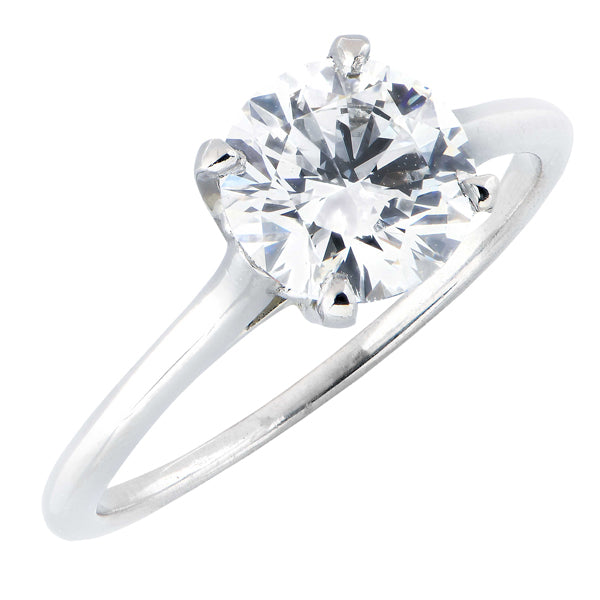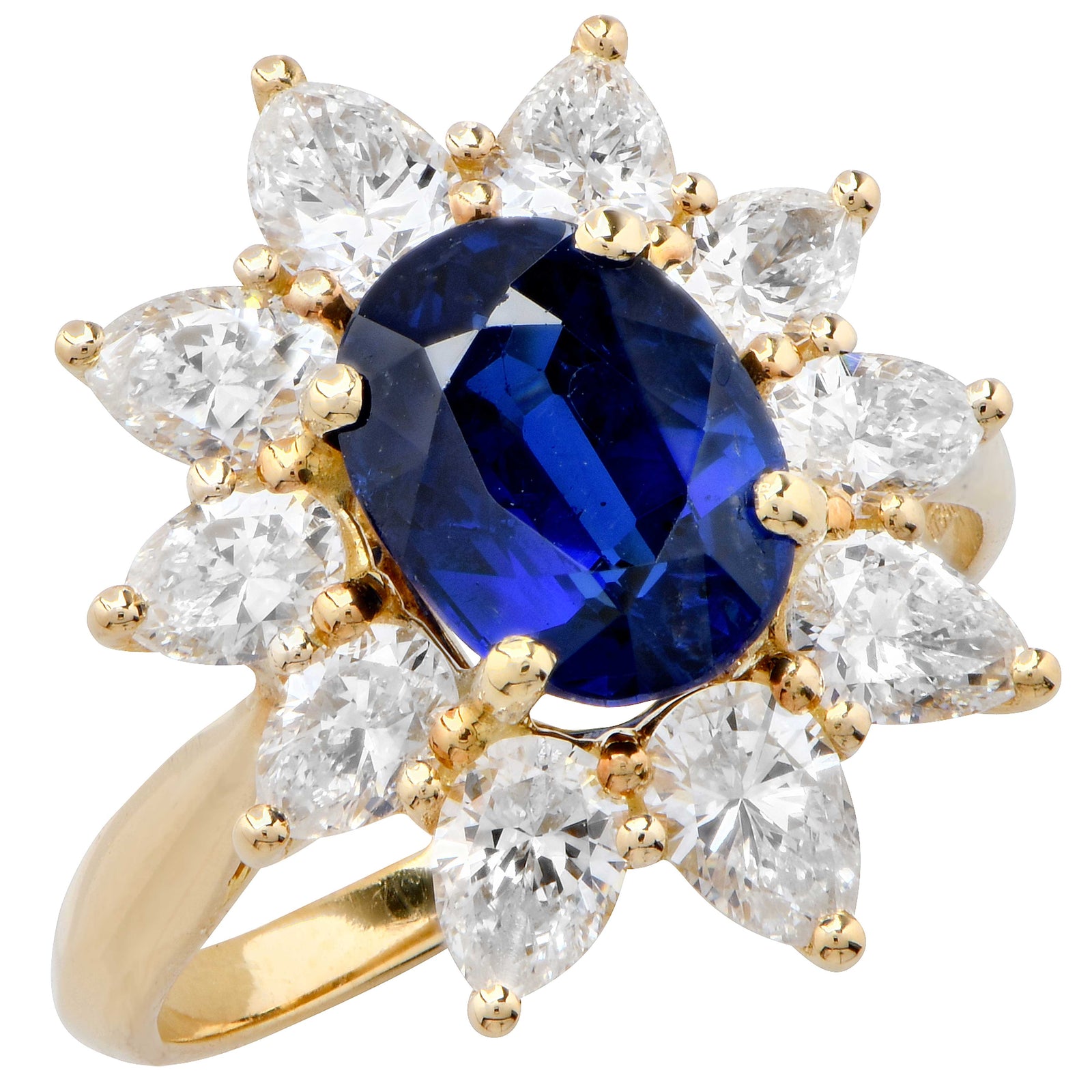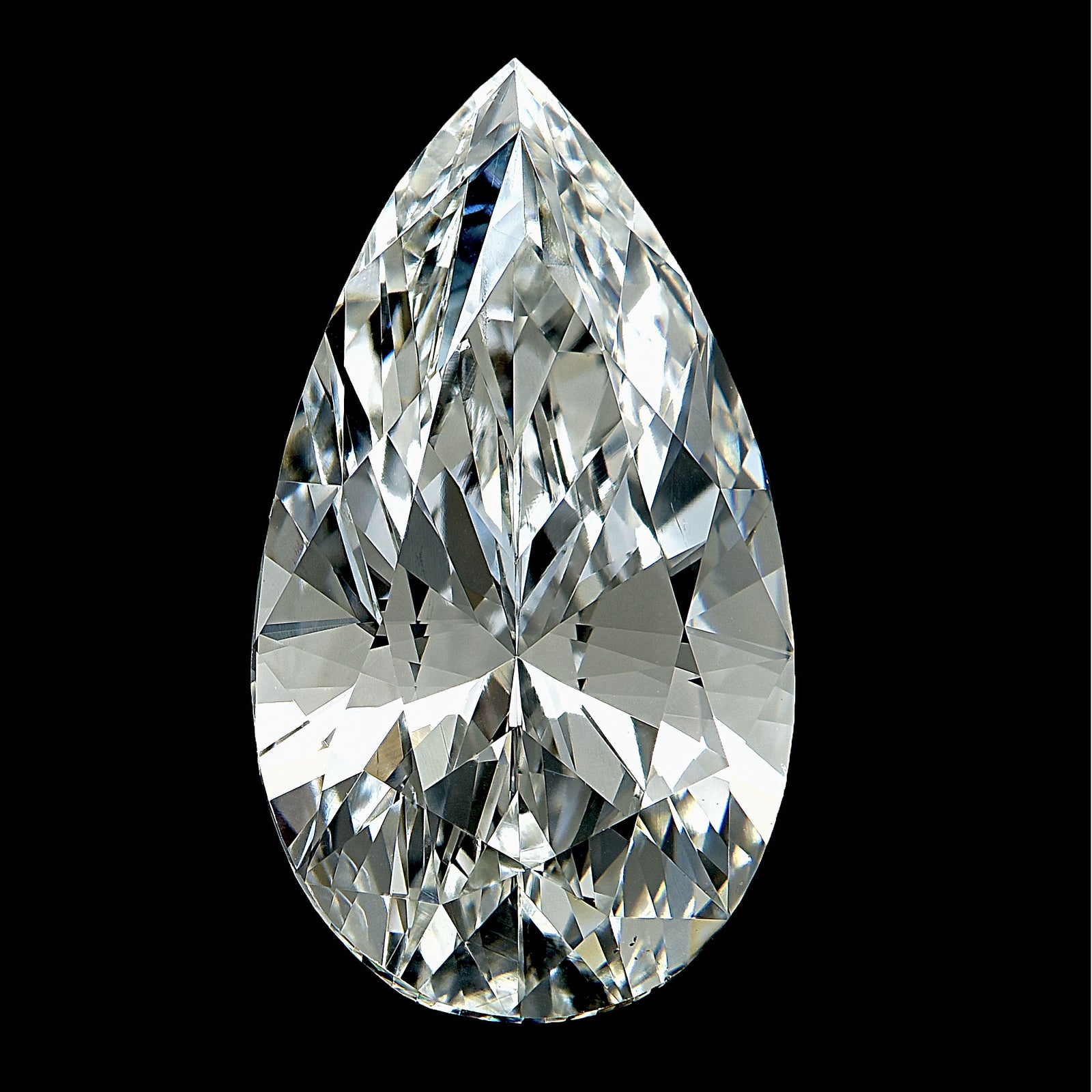If you are in the market for an engagement ring, it is very likely that you have read all about the four c’s as defined by the Gemological Institute of America, GIA (If not, you can click here). The GIA defines the four c’s as Carat Weight, Color Grade, Clarity Grade and Cut Grade. The GIA invented this grading system and with it created a universal language for the grading and trading of diamonds. Prior to the GIA’s system diamond traders and jewelers used terms like Wesselton, Top River and other descriptive terms which left a lot of ambiguity on the table and created the mystery and lack of transparency in the diamond engagement ring industry. Blue white and other color descriptive terms were also used to enhance the romantic aspects of buying a diamond. These terms have been generally abandoned by the industry as the GIA’s system has been adopted universally.
The Four C’s are all equally important when defining a diamond in an engagement ring. The carat weight of a diamond is the first factor describing a diamond. Diamonds are priced based on weight. It is important that you realize this and see how a diamond that is .96 carat can be significantly less expensive than a 1.05 carat. This is not just because of the added carat weight but also because the pricing scale jumps up at the one carat increment. A diamond trading company by the name Rapaport began providing asking prices for diamonds back in the ‘80s and they have established the pricing system for wholesale diamonds which is used widely by the diamond industry. This pricing report breaks down diamond prices by weight sections and further defines prices for colors and clarities. Whether you are aware of the wholesale price or not of your diamond, the price you pay is affected by what this report says about your diamond engagement ring.
Cut grade is effectively inseparable from carat weight as a one carat diamond which is cut poorly and looks like a .80 carat diamond will be worth much less than a one carat diamond with very good cut grade. This reduction in value is not just because the diamond in your engagement ring looks smaller from the top but also because a diamond with poor or fair cut grade has a less lively look and little scintillation. Cut grade is determined using a GIA scale which uses measurements of all of the diamond facets to create a grade. The diamond depth, table size, pavilion angles and percentage, girdle size, culet size, and crown angle and percentage are all found in a very complex table which determines the cut grade. A computerized system is used at the GIA to measure and grade cut on all round diamonds. Fancy cut diamonds, that is diamonds which are everything but round, are not graded for cut. GIA explanation of cut grade can be found here.
Color grading is achieved by observing the diamond table down on a pure white color grading card using the proper technique which establishes the power, color and distance of the light source to be used during color grading. The GIA offers for sale a lighting unit which creates the same light the GIA uses in their grading laboratory. A sample set of known color diamonds is used to compare to the diamond being graded and a color grade is established when the diamond is found to be of comparable color to the sample diamonds. In ideal conditions the size of the sample diamond will be near the size of the diamond being graded as color concentrations vary greatly in diamonds of distinct size difference. Diamonds are to be dismounted from the engagement ring to be graded for color. The scale used by the GIA and adopted by the industry is D to Z, where D is completely colorless and Z is completely saturated with color. A GIA movie detailing this process and scale can be found here.
Clarity grading is done through the use of ten power magnification using either a microscope or a loupe which is aplanatic and achromatic. This means the loupe produces an image which is not distorted in shape or color. Most high-quality loupes use a two or three lens design to achieve this quality. A jeweler will always have a ten power loupe available as it is one of the basic tools of the industry. Diamond clarity is all about the absence of inclusions or blemishes. Flawless is the highest clarity grade possible. This means the diamond has no observable inclusions or blemishes at ten power magnification. The technique used by the GIA in their grading laboratory is to first find the inclusion or blemish with a high magnification on their microscope and then zoom out to ten power magnification and see if the blemish or inclusion is still visible. GIA description of clarity grades can be found here.
On my next article I will speak about the other factors which influence diamond quality in your engagement ring and which are almost never spoken about to the public.












